Hi all,
I’m pretty excited to be able to bring this project. It ties together and old Raspberry Pi running latest version of Raspbian with HTTPD and a PHP script. The PHP code runs the gpio command in order to trigger pin 4 of the RPi for a second then turns it off. This triggers a simple 5v relay which in-turn shorts out my gate.
The obvious difference of what I’m sharing here is the fact that I wrote a SmartThings Device Handler which uses a “hubaction” which means it can be triggered from a WAN connection w/o having to put your device out on the web with a public IP. The hub performs a local action on a local IP. The project is essentially a generic HTTP Device Handler for SmartThings. The goal was to keep it as small/simple as possible. So it consists only of a single PHP script and the SmartThings Device code. It depends on no other packages except the stock Raspbian Jessie that I’ve been testing for a while.
This project was tested successfully via an external IP using a custom port. It was also tested with an Amazon Echo/Alexa and Pollster. The PHP has a flag at the top that will require a configurable HTTP username & password to be entered. This offers another level security and completely contained within the PHP code. Arduino code also has a commented out section to enable basic HTTP authentication — uncomment section at about line 80 of the Arduino sketch.
I chose Raspberry Pi for gate trigger because of its wired/reliable LAN connection. Coupled with a Ethernet over Powerline adapter (like my Netgear XAV2001) — gotta already have power in that gate box (or garage motor). I already had a retired Pi 256MB Model B that was super-slow in doing anything else, it only made sense to use it . Add a $3 relay and I can trigger and customize anything about this solution. Hoping the Pi can withstand SoCal heat… I probably need to buy a heatsink ASAP  (UPDATE: RPi 1 kept dying of outside heat so now using RPi 3 which needed one reboot during summer) The code was originally executing a Python script from PHP to trigger the GPIO (turning pins on and off on the Pi). I successfully replaced that Python code with the gpio command instead.
(UPDATE: RPi 1 kept dying of outside heat so now using RPi 3 which needed one reboot during summer) The code was originally executing a Python script from PHP to trigger the GPIO (turning pins on and off on the Pi). I successfully replaced that Python code with the gpio command instead.
FULL INSTALLATION INSTRUCTIONS FOR RASPBERRY PI:
- enable SSH in newer Raspbian editions via raspi-config > Interfacing Options > SSH
- sudo su to start the shell as root then passwd to change the root password to whatever you want
- sudo vi /etc/ssh/sshd_config — change the line to allow root login: PermitRootLogin yes
- ssh in as pi/raspberry
- sudo raspi-config — to expand SD card (done automatically in 2017) and change timezone. Can also modify /etc/defaults/keyboard to be a “us” keyboard and not the default “gb”.
- sudo apt-get update
- sudo apt-get -y upgrade
- sudo apt-get -y install apache2 php5 php5-gd wiringpi raspi-gpio rpi-update --fix-missing
- sudo rpi-update — this was key step for network stability of the Raspberry Pi. Otherwise constantly received “actively refused” errors from HTTPD & SSHD requiring reboot to fix.
- sudo visudo — and add the following to the bottom otherwise no sudo functions will work from the PHP code: www-data ALL=NOPASSWD: ALL — more info here.
- sudo service apache2 restart — to restart Apache
INSTRUCTIONS FOR ARDUINO/NodeMCU/ESP8266:
WIFI:
After the RPi, @Casper introduced me to the ESP8266 NodeMCU module which is wireless & extremely efficient with relays, LEDs, etc. and has no OS to maintain like the RPi, I implemented compatibility with the hardware device and my code. In the GitHub source folder for this project you can find NodeMCU.ino file which you simply compile & write the Arduino sketch to the board. I successfully used 3.3v relays and even the 5v relays which grabbed the positive signal directly from a spliced USB cable and the negative signal is what is sent to the GPIO pin.
WIRED RJ45 ETHERNET:
For wired connection (due to reliability) using an Arduino Nano/UNO with an RJ45 ethernet shield (ENC28J60). Nano/UNO is VERY limited in memory so only the relay logic is shared on GitHub in a file called ArduinoNano.ino. For the ethernet shield, I used a library called UIPEthernet.
The ESP8266/NodeMCU are more difficult to work with the ENC28J60. You must use this modified UIPEthernet Library, originally done by @ntruchsess then updated for use with ESP8266 by @cassyarduino on this post. Using the ENC28J60 is unfortunately inconsistent and things like Android/IOS can’t read the web page while a desktop browser can.
SMARTAPP FOR AUTOMATION OF 2nd SWITCH & 2nd CONTACT SWITCH:
I created a SmartApp & TWO Device Type Handlers called Virtual Custom Switch & device. The SmartApp will keep the virtual switch synced up with the Custom Switch of the generic HTTP device. This will help to automate the secondary/custom button.
Grab VirtualCustomSwitch.groovy file from the regular GitHub location. Create a new device in ST API and obviously assign this custom device handler to it: https://github.com/JZ-SmartThings/SmartThings/tree/master/Devices/Generic%20HTTP%20Device
If using the 2nd Contact Switch, do the same using Virtual2ndContactSensor.groovy as the DTH.
Use the new SmartApp to choose the parent switch and the virtual one/two you created in the step above. This will force the CustomTrigger/secondary-switch state to be synced with the new/virtual device and the contact switch will do the same. Get the SmartApp from this folder on GitHub: https://github.com/JZ-SmartThings/SmartThings/tree/master/SmartApps/Virtual%20Custom%20Switch%20Sync%20App
For nerds: some explanation of how/what was done. It was a true pain with the 2nd switch only because I’m trying to use the same device to monitor the parent switch but also react to ON/OFF commands when you press it. Well, not so easy… that’s called an infinite loop because when I would switch the virtual device, it would cause the tile/state to also switch thus it would run the command again — because I’m using momentary toggle (rather than stateful on & off which worked well from the start of writing the SmartApp & DTH) it ended up in an infinite loop. My solution was to store the EPOCH time on the parent device handler of when the last time Custom was triggered. If 3 seconds have not passed, it will NOT run the CustomTrigger/2nd-switch command again. So that’s the only limitation at the moment. In order to avoid an infinite loop, I do the time check which may slow down some lightning-fast folks but it’s all worth it for the sake of automation.
RELATED INFO:
INFRARED INFO: Here’s @Casper’s original project with using IR and mine attempting to automate the TV remote.
Here is one of the videos I used to start me off with the Pi & relays: https://www.youtube.com/watch?v=p2abZ90-eU0
Useful command for checking the Raspberry Pi pin status & value. It’s pretty close to what WebIOPi offers but in text mode: watch -n0.5 gpio readall
Here’s another/related Device Type that reads the GPIO pin states on the Raspberry Pi and serves them back to SmartThings to an image tile. These two projects share the PHP.
SOURCE CODE:
Enjoy!
JZ
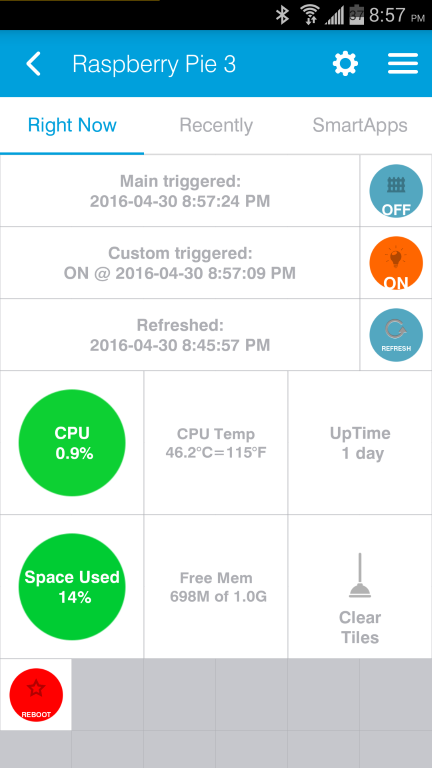
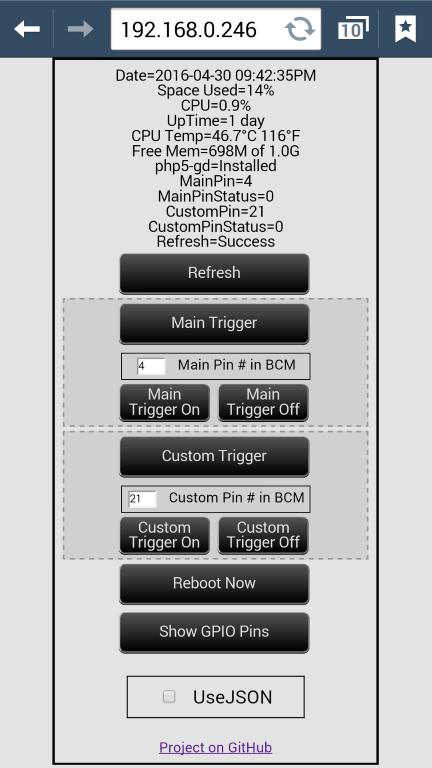

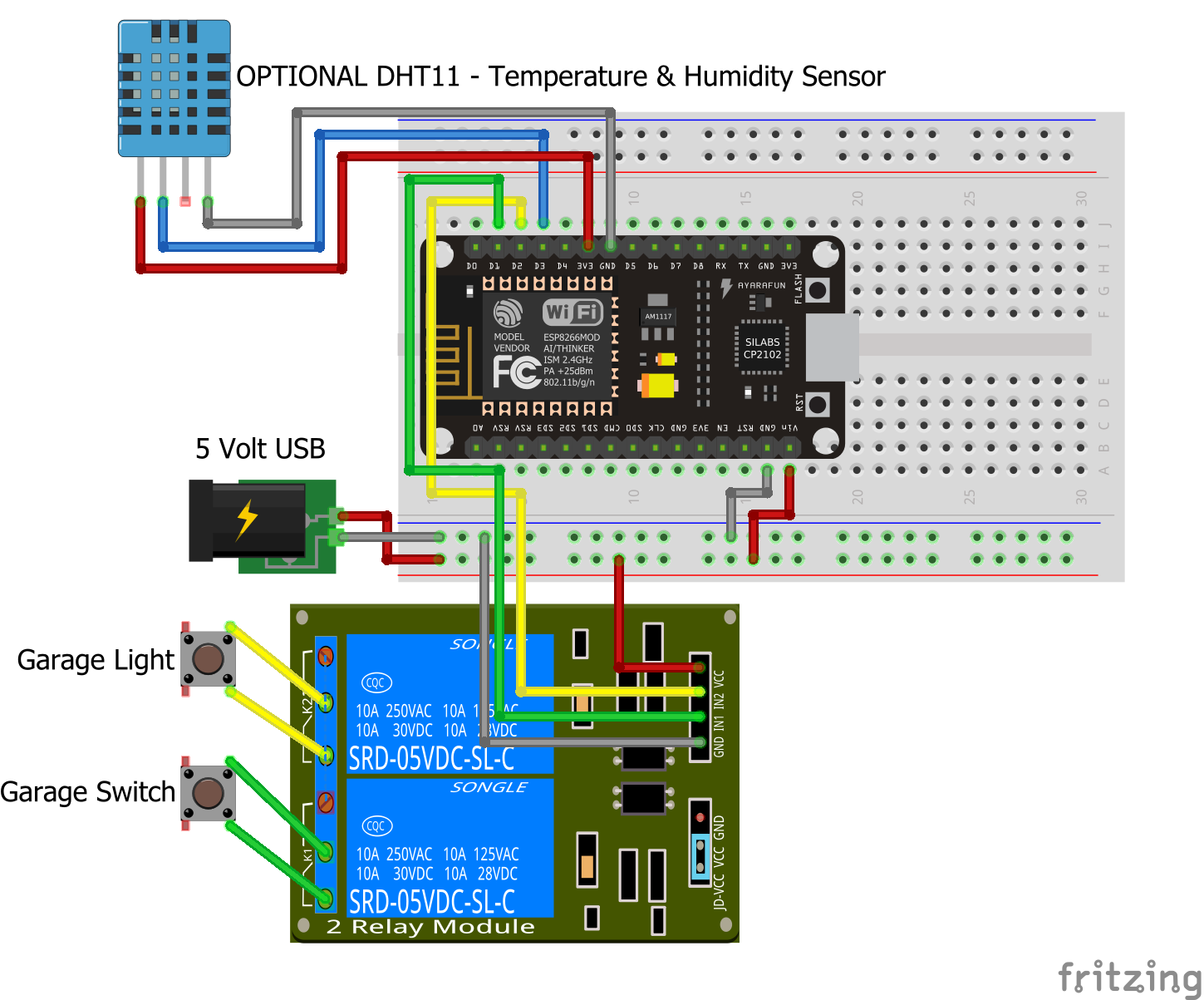
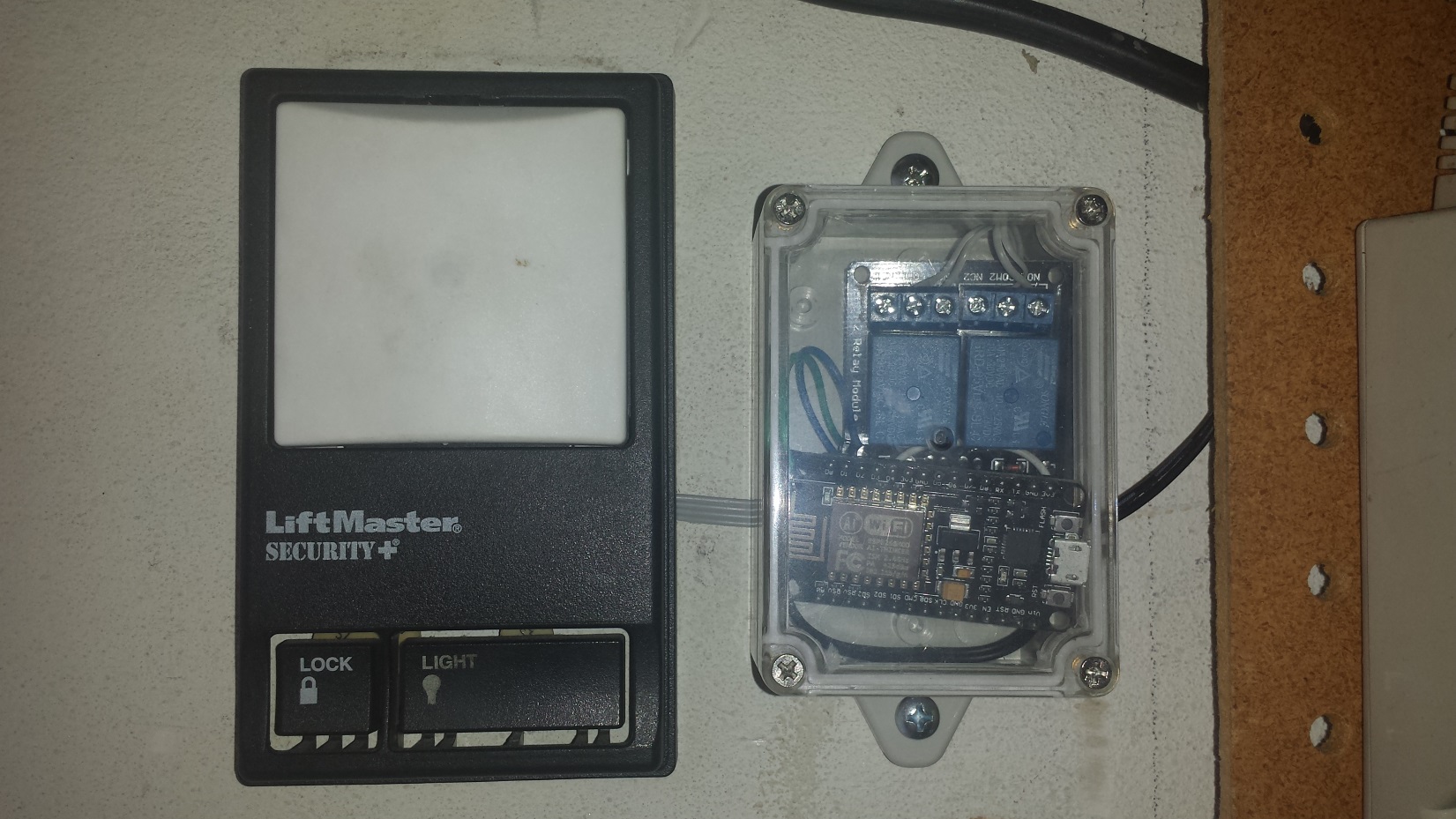
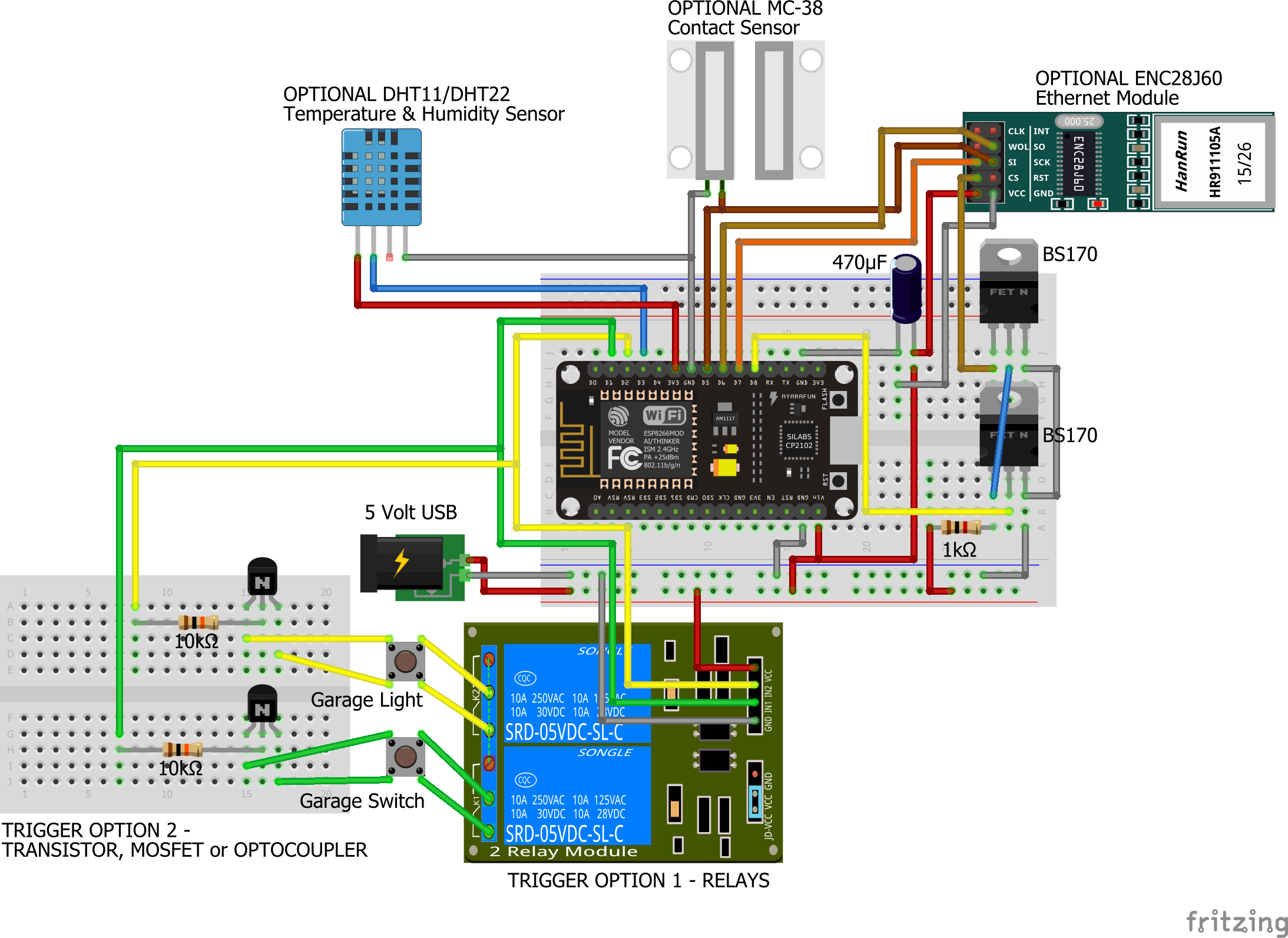

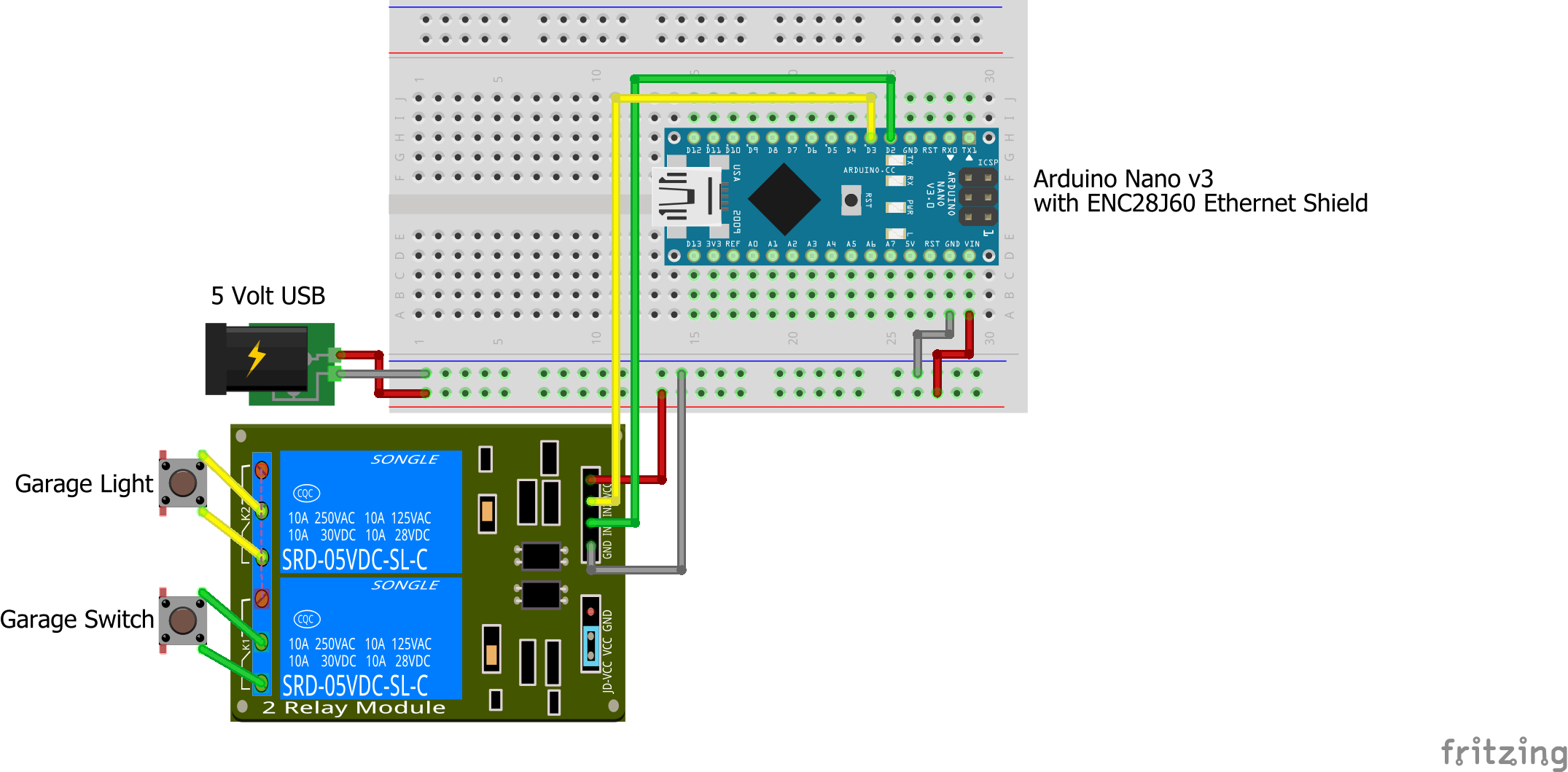

 that’s the downside of having a gate box that is closed and can’t see the LED indicators on the relay.
that’s the downside of having a gate box that is closed and can’t see the LED indicators on the relay.
